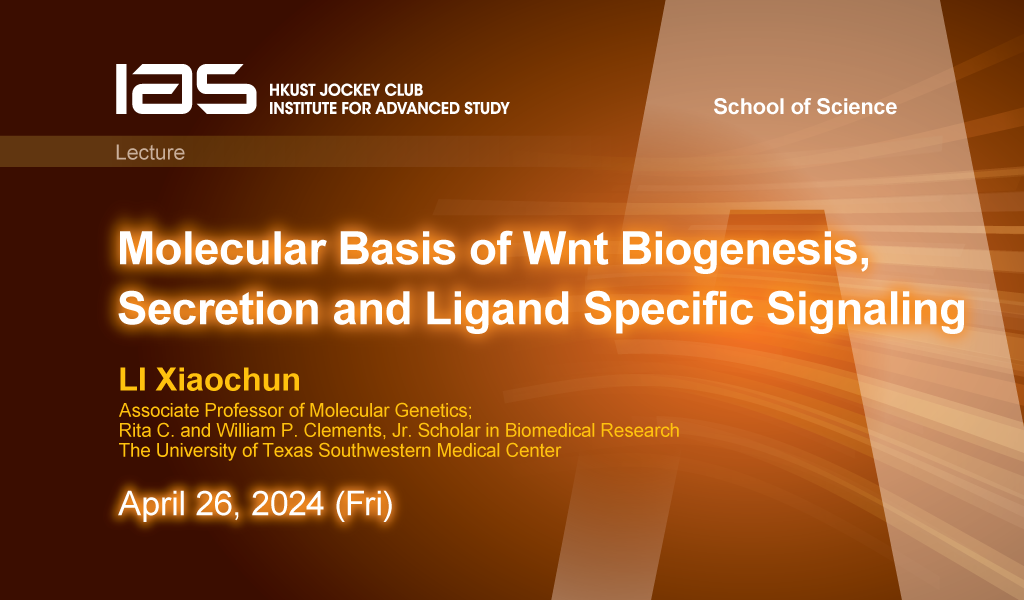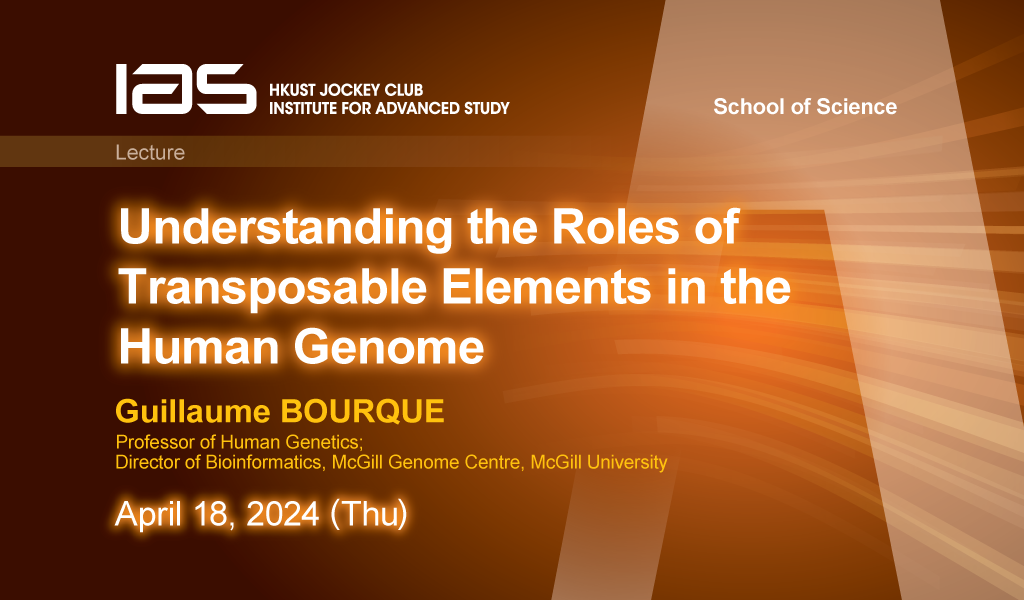Speaker: Professor Chuanlang ZHAN
Affiliation: Institute of Chemistry, Chinese Academy of Sciences
Hosted by: Professor He YAN
Abstract
The ternary approach is an effective strategy to improve the device function of organic photovoltaic cells (OPVs). The use of a third component having a narrower optical bandgap than the host has been widely investigated. In the cases of using two acceptors as the ternary strategy, increased short-circuit current-density (Jsc) can be obtained with the use of a narrower acceptor as the third component. However, the reduced energy level of the lowest unoccupied molecular orbital (LUMO) of the loading acceptor can reduce the open-circuit voltage (Voc) of the ternary device in comparison to the host binary solar cell. To address this, we chose an acceptor having a higher LUMO level than the host as the third component. Our results demonstrated that increased Voc values can be obtained by using this ternary strategy. When used PCBM, ITCT, IDIC, and IN-4F as the third component of the Y6 or its analogue based binary systems, over 16%-efficiency ternary blended OPVs and 17%-efficiency quaternary blended OPV have been achieved.
About the speaker
Dr. Chuanlang Zhan received his BSc and MSc (Supervisor: Prof. Jiqing Xu) degree from Jilin University and his Ph. D. degree from Institute of Photographic Chemistry, Chinese Academy of Sciences (CAS) under supervision of Prof. Duoyuan Wang, and joined Institute of Chemistry, CAS (ICCAS) as a Postdoc fellowship at Laboratory of organic Solids, working with Prof. Daoben Zhu and Prof. Deqing Zhang. Later he was promoted as an associate professor at this institute. He as a visiting scholar worked with Dr. Ivan Huc at Institut Européen de Chimie et Biologie in 2004-2005 and with Prof. Peter E. Nielsen at Panum Institute, Copenhagen University in 2005-2006. He is now a professor at ICCAS, a team member of Prof. Jiannian Yao. His research activities focus on functional molecular materials and devices with more than 100 peer-reviewed papers published on the recognized scientific journals. He first worked on molecular self-assembly and then photovoltaic materials and devices. He reported the perylene-diimide dimmer based nonfullerene small-molecule electron acceptors (N-SMAs) with an impressive efficiency of 4.03% in 2013, a crystal structure of fused-ring based N-SMA in 2018, “Voc-increased” ternary (in 2019) and quaternary (in 2018) blended active layer material approaches for over 16%-efficiency photovoltaic cells, and binary blended small-molecule material approach (in 2017) for fabrications of electron-transporting layer.
Selected publications
Affiliation: Institute of Chemistry, Chinese Academy of Sciences
Hosted by: Professor He YAN
Abstract
The ternary approach is an effective strategy to improve the device function of organic photovoltaic cells (OPVs). The use of a third component having a narrower optical bandgap than the host has been widely investigated. In the cases of using two acceptors as the ternary strategy, increased short-circuit current-density (Jsc) can be obtained with the use of a narrower acceptor as the third component. However, the reduced energy level of the lowest unoccupied molecular orbital (LUMO) of the loading acceptor can reduce the open-circuit voltage (Voc) of the ternary device in comparison to the host binary solar cell. To address this, we chose an acceptor having a higher LUMO level than the host as the third component. Our results demonstrated that increased Voc values can be obtained by using this ternary strategy. When used PCBM, ITCT, IDIC, and IN-4F as the third component of the Y6 or its analogue based binary systems, over 16%-efficiency ternary blended OPVs and 17%-efficiency quaternary blended OPV have been achieved.
About the speaker
Dr. Chuanlang Zhan received his BSc and MSc (Supervisor: Prof. Jiqing Xu) degree from Jilin University and his Ph. D. degree from Institute of Photographic Chemistry, Chinese Academy of Sciences (CAS) under supervision of Prof. Duoyuan Wang, and joined Institute of Chemistry, CAS (ICCAS) as a Postdoc fellowship at Laboratory of organic Solids, working with Prof. Daoben Zhu and Prof. Deqing Zhang. Later he was promoted as an associate professor at this institute. He as a visiting scholar worked with Dr. Ivan Huc at Institut Européen de Chimie et Biologie in 2004-2005 and with Prof. Peter E. Nielsen at Panum Institute, Copenhagen University in 2005-2006. He is now a professor at ICCAS, a team member of Prof. Jiannian Yao. His research activities focus on functional molecular materials and devices with more than 100 peer-reviewed papers published on the recognized scientific journals. He first worked on molecular self-assembly and then photovoltaic materials and devices. He reported the perylene-diimide dimmer based nonfullerene small-molecule electron acceptors (N-SMAs) with an impressive efficiency of 4.03% in 2013, a crystal structure of fused-ring based N-SMA in 2018, “Voc-increased” ternary (in 2019) and quaternary (in 2018) blended active layer material approaches for over 16%-efficiency photovoltaic cells, and binary blended small-molecule material approach (in 2017) for fabrications of electron-transporting layer.
Selected publications
- Su, M.-A. Pan, Z. Liu, et al, Chem. Mater. 2019, 31, acs.chemmater.9b02943.
- -A. Pan, T.-K. Lau, Y. Tang, et al, J. Mater. Chem. A 2019, 7, 20713-20722.
- Li, Y. Wu, Y. Tang, et al, Adv. Energy Mater. 2019, 9, 1901728.
- Chang, T.-K. Lau, M.-A. Pan, et al, Mater. Horiz. 2019, 6, C9MH00844F.
- Yan, W. Liu, J. Yao, C. Zhan, Adv. Energy Mater. 2018, 8, 1800204.
- Li, D. Yan, F. Liu, et al, Sci. China Chem. 2018, 61, 1609-1618.
- X. Zhang, Z. Lu, L. Ye, et al, Adv. Mater. 2013, 25, 5791-5797.
4 Nov 2019
10:30am - 12pm

Where
Room 4621, 4/F (Lifts 31/32), Academic Building, HKUST
Speakers/Performers
Professor Chuanlang ZHAN
Institute of Chemistry, Chinese Academy of Sciences
Institute of Chemistry, Chinese Academy of Sciences
Organizer(S)
Department of Chemistry
Contact/Enquiries
chivy@ust.hk
Payment Details
Audience
Faculty and Staff, PG Students
Language(s)
English
Other Events

26 Apr 2024
Seminar, Lecture, Talk
IAS / School of Science Joint Lecture - Molecular Basis of Wnt Biogenesis, Secretion and Ligand Specific Signaling
Abstract
Wnt signaling is essential to regulate embryonic development and adult tissue homeostasis. Aberrant Wnt signaling is associated with cancers. The ER-resident membrane-bound O-acyltransfera...

18 Apr 2024
Seminar, Lecture, Talk
IAS / School of Science Joint Lecture - Understanding the Roles of Transposable Elements in the Human Genome
Abstract
Transposable elements (TEs) have expanded the binding repertoire of many transcription factors and, through this process, have been co-opted in different transcriptional networks. In this ...
